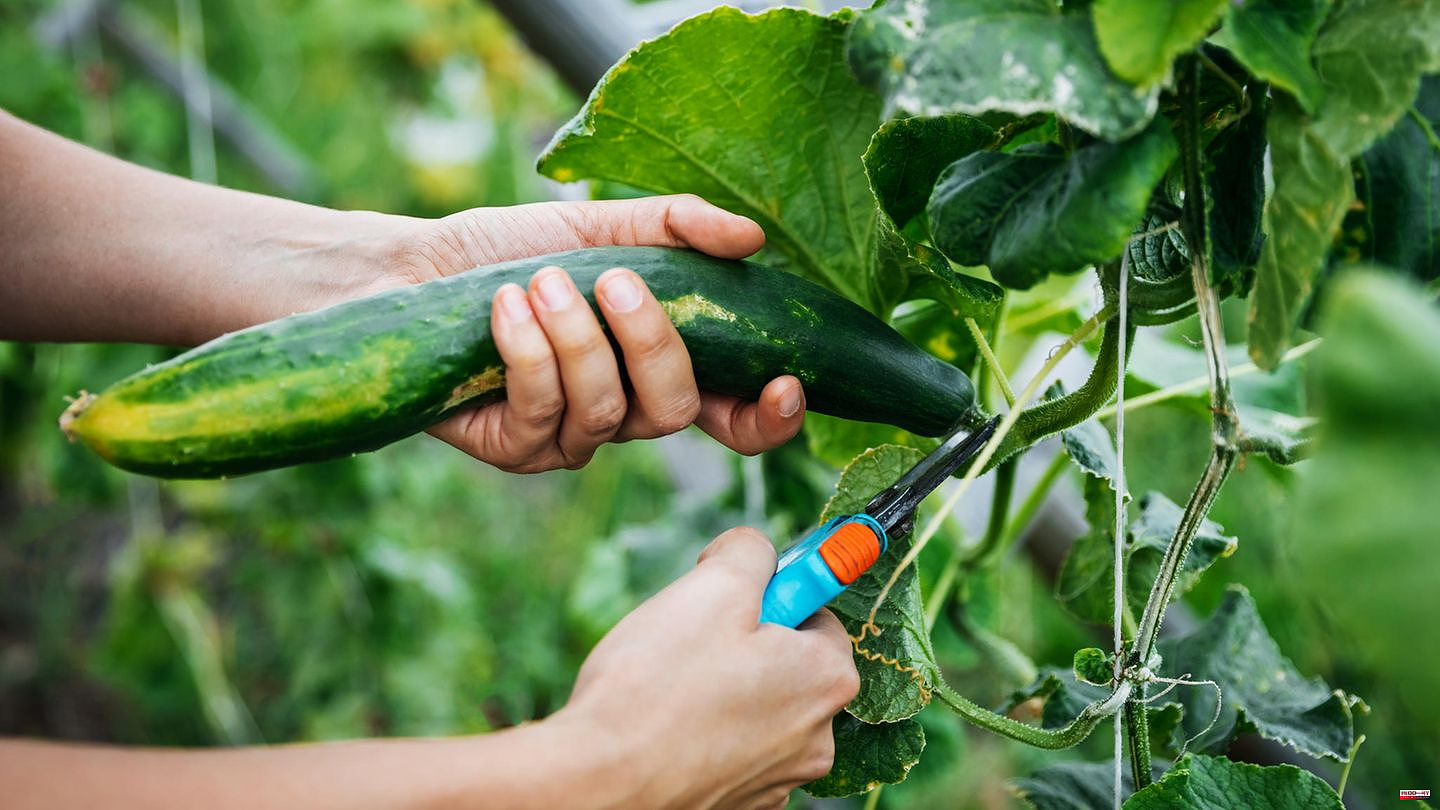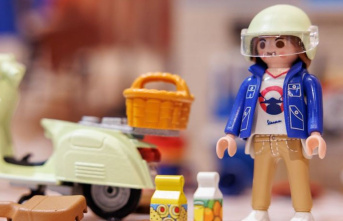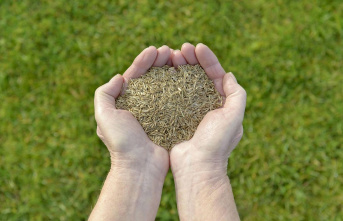Not all cucumbers are the same: Depending on which variety you choose, different requirements are placed on the location. For example, it is said that lettuce and cucumbers feel more comfortable in the greenhouse. Peeled and pickled cucumbers, on the other hand, (usually) also grow outdoors. Depending on when you want to start sowing the pumpkin family, there are different approaches. Below we will explain to you what these are and what you should pay attention to when growing cucumbers.
There are two different ways to grow cucumbers: Either you prefer the pumpkin family (in April at the earliest) or you sow them directly outdoors - but only after the ice saints, when frost is no longer expected. Both methods are successful if you follow these tips:
Pre-cultivate or sow directly?
If you would like to pre-cultivate cucumbers, you will need appropriate multi-plates or growing pots as well as peat-free growing soil that is rich in nutrients. Depending on how large the individual compartments or containers are, you can add two to three seeds - these are placed approximately two centimeters deep in the soil and covered with it. The soil is then watered well before you let the cucumbers rest in a place that is at least 20 degrees warm and bright (for example a windowsill). If you always keep the seeds moist, they will germinate after just one to two weeks. If the small seedlings form their first leaf next to the two cotyledons, they can be pricked out. Or you can remove the weakest plants and leave the strongest ones. This method is said to be gentler on the sensitive cucumbers.
Tip: If the pumpkin plants are to be planted outdoors later, it can also be helpful to get the plants used to the colder temperatures by putting them outside for a few hours every day.
Another option is to sow the cucumber seeds directly outdoors. However, the outside temperatures must be slightly higher for this planting method - so it is recommended that you only start growing after the Ice Saints (i.e. mid-May). Varieties for pickling, among other things, are said to be particularly suitable for the garden. Depending on how protected and warm the location is, mini snack cucumbers can also be grown outdoors. All others usually thrive better in a greenhouse. If the seeds come directly into the bed, up to three grains are planted two to three centimeters deep into the soil at once. These will be pricked later. Please also note here: A safety distance of at least 40 centimeters should be maintained between each new planting hole. Last but not least, the cucumbers are well watered and should be kept moist until they germinate.
Tip: Cucumbers that you have pre-cultivated can also go into the bed (or greenhouse) after the ice saints. Enrich the soil with fresh compost in advance, as the plants are heavy feeders and need a lot of nutrients.
The right location
Regardless of which of the two methods mentioned you want to use: In both cases, the right location is crucial so that the young plants can grow optimally. But which place do the cucurbits prefer? In fact, you should plant the vegetables in a place that is protected from the wind and as bright and sunny as possible. However, it can get very warm in the greenhouse in summer, so periods of shade and proper ventilation are also important. As far as soil is concerned, cucumbers like a loose, humus-rich and slightly sandy subsoil. If the soil is too dense, wet and heavy, healthy growth can be inhibited.
Cucumbers are particularly susceptible to fungal diseases such as powdery mildew: You can recognize the "real" one by the fact that white-silvery spots form on the leaves (which are a little reminiscent of mold) until they die. Infected areas should therefore be removed as quickly as possible to stop the spread. The same applies if yellow spots appear on the leaves, a typical sign of downy mildew. To reduce the risk of infection in both cases, it is recommended to install a greater safety distance between plants. You can also use a home-made decoction or extract of field horsetail and water the soil (sparingly) with it to make the plants more resistant to diseases.
Whether in the greenhouse or outdoors: as cucumbers continue to grow, they form long shoots that cling to everything that is in their immediate vicinity. In order to offer the plants more support, it is recommended to set up trellises - there are various options made of wood, metal or plastic: from cucumber towers to trellis nets to cucumber grids, you can help cucumbers wind their way upwards by using them Tie shoots to it (carefully). After a short time, the climbing shoots wrap themselves around it. Another advantage is that the leaves are “ventilated” better and are therefore less susceptible to diseases such as powdery mildew or downy mildew.
And one more tip at the end: To make the freshly harvested pumpkins last longer, they should be stored in the refrigerator - or you can pickle the cucumbers to preserve them.
Sources: Statista, My Beautiful Garden
This article contains so-called affiliate links. Further information are available here.












